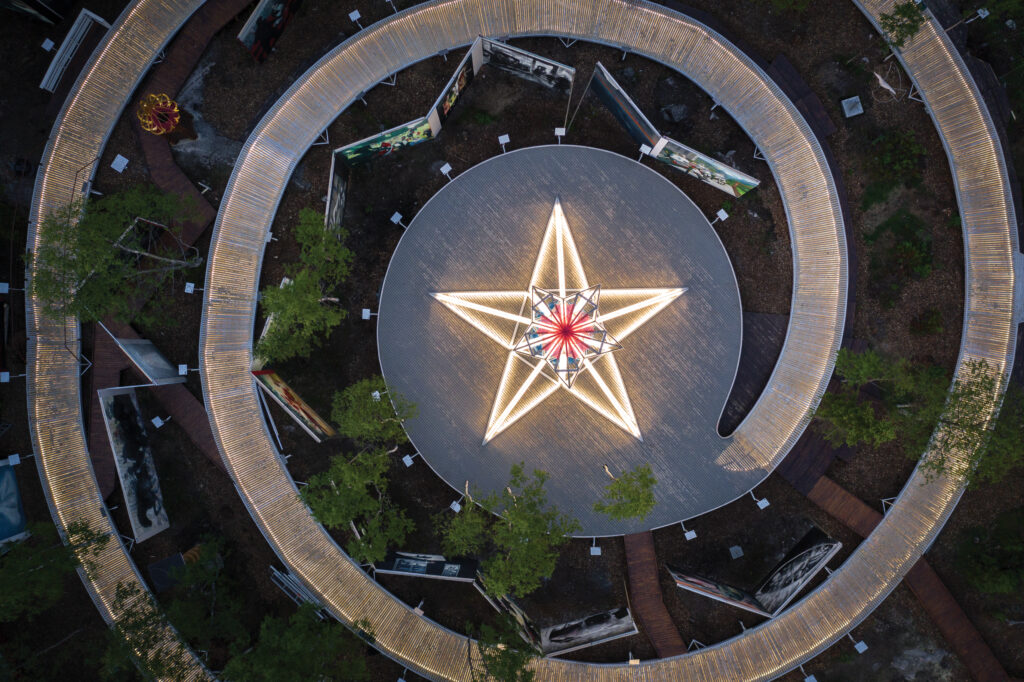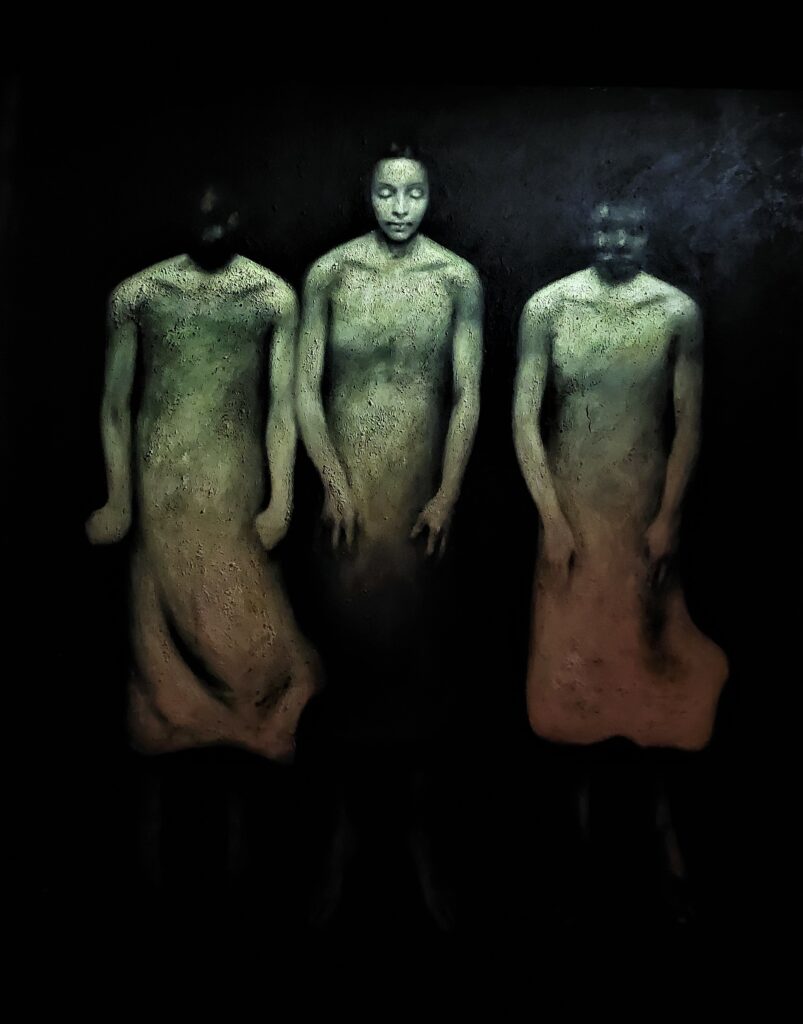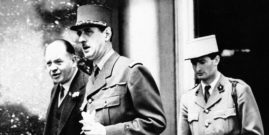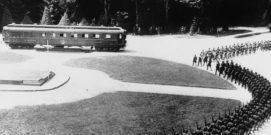Eighty years ago, France suffered perhaps the greatest humiliation in its history, and de Gaulle rallied the nation to continue the fight.
Norway's Monument to Freedom
“This is our liberty story,” affirms Sander Bjerketvedt, a site director at Norway’s Rose Castle—Roseslottet. The large-scale art installation is focused on Norway’s experience in World War II and nourishes the values that underpin a free people. Its founder, Vebjørn Sand, calls it “an artistic tribute to democracy.”
Located high above Oslo at the summit of Holmenkollen, the installation forthrightly declares itself to be a “project in support of democracy, humanism, and the constitutional state.” Time magazine has named Roseslottet one of the world’s “100 Greatest Places,” yet it remains little known to North Americans.
The creation of artist brothers Vebjørn and Eimund Sand, the “Rose Castle” consists of 278 paintings, five towering symbolic sails, miscellaneous smaller items, several conceptual installations, and a performance stage, all organized along a spiraling 240-meter boardwalk. This “frozen river of time” terminates at the “star of the unborn,” a creation of Eimund’s meant to be “a meditation object for faith in human dignity.” To best symbolize “the individual at the center—the credo of humanism,” visitors may walk inside the star.
The star is one of many beautiful geometric forms on display. The Sands explain that geometry is a universal and eternal language that takes us back to the Greek foundations of humanism. “We want to use this language to point out that democracy, the rule of law, and humanism are not just societal institutions, but first and foremost states of mind that are rooted deep within us,” Eimund states.

Roseslottet is best reached via the Holmenkollen metro line, which emerges overground outside the city center and climbs the steep hills through the outer city and suburban environs, giving clear vistas of water and city. Visible from Oslo, the golden sails soar above the surrounding evergreen trees. In turn, the Rose Castle’s elevation provides picturesque views of Oslo and its splendid inner fjord: water, islands, skerries, and steep, heavily wooded hills. It was the Sands’ intention to merge artifice and nature to mark important parallels between the “golden values of Norway” and the nation’s origins. “When Norway was formed as an independent country, we didn’t have a city culture,” Vebjørn explains, “it was the mountains, the country; it was nature that had a deep impact on our foundation.” Fittingly, the Holmenkollen line, was the first metro line built, and its primary purpose was to allow city folk to get out in nature.
The sails honor the courage and sacrifice of the war generation by using symbols of Norwegian nature and culture. Five sails, five years of war: a sail to honor the sailors and merchant marines instrumental to Allied victory; a mountain to symbolize the partisan resistance in the north; a spruce tree to symbolize military resistance in the south, including Milorg, the most famous resistance network, that worked to sabotage German efforts and prepare for an Allied counter-invasion; a combination quill/wing to symbolize both the air force and the underground press which kept up the fight against the occupying Nazis; and, at the center, a royal birch to symbolize King Haakon the VII’s defiant “no.”
Haakon was confronted with a choice in 1940: He could accede to German demands and install Vidkun Quisling as the puppet head of government and thus forestall German military takeover, or he could refuse, inviting German retaliation. In a speech to the Storting, the national legislature (whose name means “the Great Thing”), the King declared that he would abdicate rather than give in to German demands. The king’s “no” inspired that body to likewise refuse surrender, knowing full well that it meant German invasion, wrathful occupation, and the necessity to form a government in exile.
The traitor Quisling’s name has since become a metonym for willing collaboration with an invading or occupying force. He and his followers are remembered in their infamy, while thousands of Norwegians resisted actively, and thousands more endured, undoubtedly buoyed by their stalwart king and by their government’s refusal to surrender without a fight. Roseslottet honors these unassuming heroes.
“The Faces of History” series of paintings captures members of this great generation before it passes entirely from the earth. Vebjørn has traveled extensively to meet survivors, witnesses, and resistance members and has painted them in a series of high-bust portraits. The accompanying plaques tell something of their story, and it is a testament to both the subjects and to the artist’s expressive realism that one invariably wants to know more. Vebjorn insists that he meet each “time-witness” in person so that he can “hear their voice in the paintings.”
The Norwegian victims of anti-Semitism, representative of the millions of victims of the final solution, are commemorated by the installation “Ellinor’s House,” named for five-year-old Ellinor Meiran, who perished at Auschwitz.
Lillian Gabrielsen’s portrait is swathed in yellow and orange. She looks out steadily, calmly, proudly. She worked as a contact inside the local branch of the Norwegian resistance, communicating through coded messages embedded in fake love letters, one of many ordinary citizens turned heroes by the war. One thinks of how loosely the word anxiety has come to be used, now applied to the comparatively trivial upsets of life. How truly anxious the days and nights of resistance fighters must have been.
Eystein Røset looks the settled, handsome elderly gentleman in his portrait. But as a young soldier, he was seriously wounded during the early stages of the Battle of Narvik (the Nazi’s first military defeat) in April 1940. Although this ice-free North Atlantic port was lost later that summer, the Germans received the message that Norwegians were not going to roll over for them. Men like Røset were underdog heroes, unable to stave off the German forces who outnumbered and outgunned them, even with British forces still present during the war’s early months.
Sustaining democratic values and cultivating a humanistic spirit requires continuous effort in the best of times. In times of war, it requires the right existential choices to be made by thousands of ordinary citizens. The heroism of resistance women is honored with over forty full-length portraits in the “Mozart Series” (so-called because Vebjørn painted while listening to Mozart, whose music he found liberating). “When they [first] wrote the history of the war in Norway, it was a boy’s war,” Vebjørn explains, “and the women were not taken into account as they deserved to be.”
Women from the north predominate, and amongst them are ethnic Sami. Some acted as local guides for resistance and for those seeking escape to neutral territory, while others aided prisoners doing forced labor on large-scale engineering projects. Dagny Sibblund is shown in a jumpsuit, holding a parachute. She was the first Norwegian female paratrooper. Eva Jorgensen led 1,200 men in the Milorg resistance, but because she was a woman, she was not allowed to march with the men in a victory parade at the war’s end. Vebjørn has painted her in front of the Palace at the head, his art providing the justice denied in real life.
But it was a German woman who provided the inspiration for Vebjørn to begin painting WWII subjects. Traute Lafrenze was the first “contemporary witness” he painted. She was the last surviving member of the White Rose, an anti-Hitler, anti-fascist movement operating inside of Germany as late as 1942 and the inspiration for the Rose Castle’s name. Their heroic efforts to shake German citizens from their moral complacency predictably met with arrest and execution, though Lafrenze escaped. In honor, a large white rose sculpture occupies a prominent place in commemoration. “The White Rose was a very important theme for me in the beginning, and then I moved to a series of paintings that I called ‘The Choice of the Individual,’” Vebjørn explains, reiterating the theme of existential choices that Norwegians also faced.

As well as producing heroes, the war claimed victims, many of them innocent non-combatants. The exhibit program informs us that 773 of some 2,100 Norwegian Jews were deported to death camps. Only 38 survived. The Norwegian victims of anti-Semitism, representative of the millions of victims of the final solution, are commemorated by the installation “Ellinor’s House,” named for five-year-old Ellinor Meiran, who perished at Auschwitz. A series of paintings, done in shades of white, gray, and black intended to evoke Schindler’s List, follows her journey to the death camp. Upon arrival in German-occupied Poland, men were sent to work camps. Women and children were immediately sent to the gas chambers. The paintings culminate inside Ellinor’s House with the evocative “Ash Sleep,” which depicts three spirits who will “sleep themselves into the shape of stars,” according to the poet Nelly Sachs, whose words are intoned over gentle choral music.
Vebjørn captures the evil planning of the Final Solution in the large-scale “Wannsee Conference II,” whose intellectual origin he attributes to Hannah Arendt’s discussion of the banality of evil. Here, in all their finery, the most notorious war criminals of the twentieth century are champaign-toasting around a white-clothed table. They have just confirmed that the extermination of the Jews will be ratcheted up, all departments in full cooperation, and the deliberate starvation of millions in occupied countries must also be enacted. Sand calls the moment, “the zero point of European civilization,” which he paints with echoes of Renoir capturing a moment of bourgeois pleasantries in line with Arendt’s observations.
Other victims include the astonishing 130,000 prisoners of war brought to Norway to work on various projects. Most of them were Soviets and Slavs, despised by the Nazis. Vebjørn has declared his intention to “draw these people out of the masses and show them as individuals with their own fates.” Some are depicted as “Faces of History,” while others are depicted in groups inspired by historical photographs.
In the face of wartime loss and compromise, Norway endured, recovering and rejuvenating the values that underpin its democratic state. “When I explain to children what the Rose Castle is,” says Vebjørn, “I tell them that we are building a golden castle in the woods that guards the most beautiful gift of all: freedom.”



